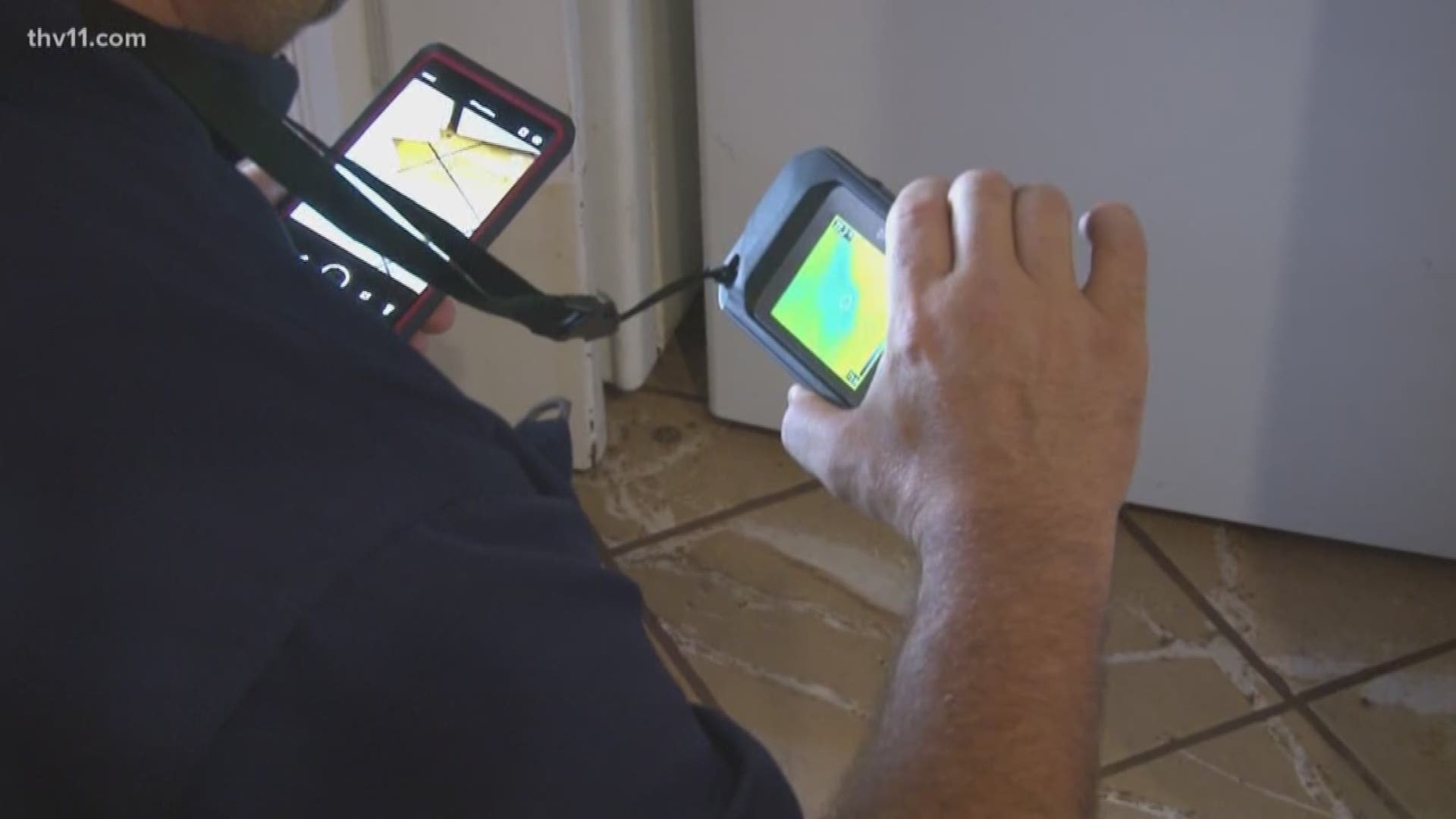BIGELOW, Ark. — Lots of families are finally returning to their homes as the Arkansas River recedes following historic flooding. For many, the worry that comes with evacuating is being replaced by the sadness of damage and the exhaustion of demolition.
Doris Delph is trying to get into the process of repairing her Bigelow home as quickly as possible.
“I had no idea what I was coming back to,” she said Monday. “And at first, I thought it was just a small amount of water. But after I got inside, it was up, like, three or four feet.”
She returned Saturday for the first time since the flooding forced her to evacuate. “It was so hard to see,” she recalled. “You know, it took me a long time to build this house. And when I came in and saw the devastation and things floating around, the floors looking horrible. It was one of the hardest things that I’ve had to see.”
Delph got the water out of her house but saw how quickly flooded walls and floors can cause problems. “I noticed that there’s mold starting already that I didn’t see when I was here on Saturday,” she said.
She hired Amazing Grace Restoration to do the demo work after an inspection Monday afternoon. Stephen Ardeneaux, who owns the company, used an infrared camera and a moisture meter to determine the severity of the damage.
“The water was about a foot and a half into the home,” he said, holding a moisture meter to a kitchen wall, “but as we come up the drywall here, we’re still wet, because it’s going to wick.”
Ardeneaux said water will wick its way up insulation and drywall as long as the water is allowed to remain, which highlights the need for homeowners to promptly remediate flood damage.
All the water sitting inside Delph’s home during several warm days made the air inside incredibly humid. Mold was growing on all of her living room furniture and some of the furniture in her garage, and a thick layer formed on the wood dresser in a guest bedroom.
Ardeneaux said it is easy to develop breathing problems from mold, so the best way to protect yourself is to get rid of everything moldy or wet.
“On Facebook, I’ve seen a lot, people saying, ‘just take bleach and kill it,’” he mentioned. “Well, that’s not the end result that you want. You do want to kill it, but the best policy; we’ve been trained, the industry standard is remove and replace.”
Amazing Grace will help Delph document all the damage as they remove all the items from inside her home and discard the ruined floors and walls. It could be another week or two before her insurance company shows up, but with photos of her possessions and the damage to her house, she can proceed to demolition.
It’s a task she’s not looking forward to, but one she is ready to begin.
“It will be hard, because, you know, there is no place like home,” she said. “But you know, I’ve asked the Lord to give me peace, and I’ve got that peace from Him, a peace that surpasses no understanding.”
Ardeneaux said it is okay for homeowners to do the demolition on their own. His first tip is to be overly cautious of electricity.
“Think safety,” he advised. “Electrical issues could be a problem, especially if it rose into their outlets. If they’ve got electrical things plugged in and they’ve got standing water, things can short out, and you don’t want to get shocked or electrocuted. So, you want to shut the main power off to your house or have an electrician come in and clear the space by just checking to make sure that there are no issues with your electrical.”
He said homeowners should open windows when they can to improve ventilation, and not take chances with mold. “Grab a couple of these small N95 masks,” he said. “They’re at Home Depot and Lowe’s, and just wear these when you’re inside the house, whether you’re in there just walking around. Protect you, protect your kids, people that might be helping you do the cleanup. This and gloves will help immensely to help with the contamination levels.”
He said homeowners should ask to see the certification of anyone they consider hiring to work on their homes, and that they should keep every receipt related to home repairs and take pictures of everything affected by flooding.
“Whether you have flood insurance through your homeowner’s policy or you’re applying for FEMA assistance, the number one thing that you need to do—whether you’re saving something or discarding something—is to take photos,” he stated. “Take videos and photos for when you’re filing, and you have to make all your lists out, you want to have photo documentation, so you remember everything, number one, but number two, you have proof that it was yours.”

